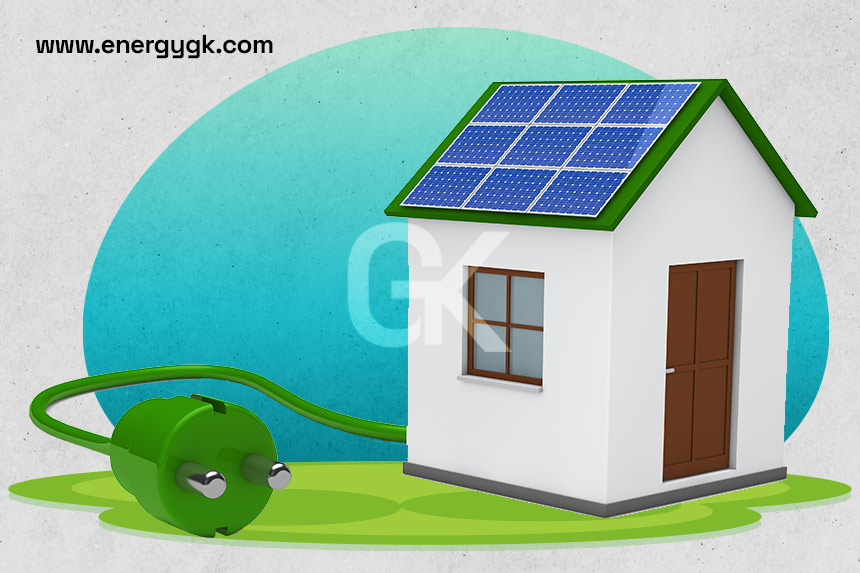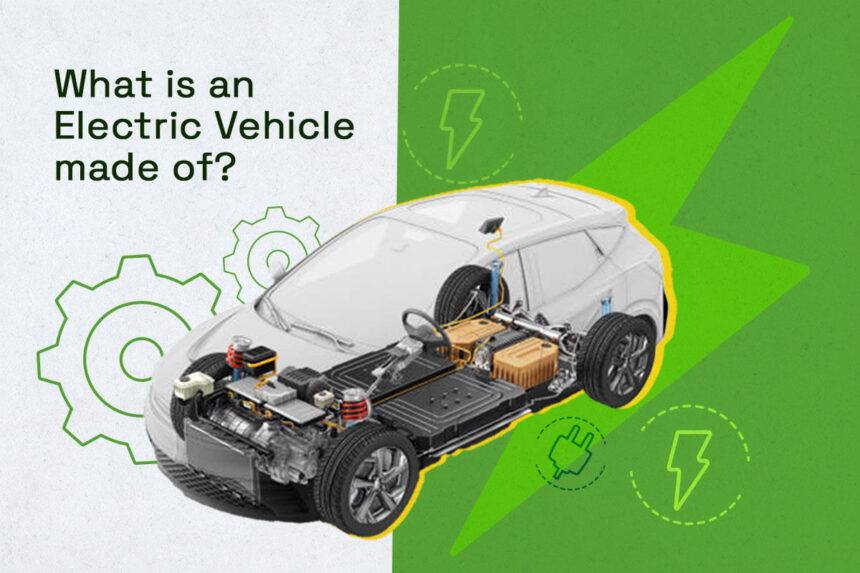Introduction:
In recent years, the urgency to address climate change and reduce our carbon footprint has led many homeowners to explore alternative energy sources. Renewable energy offers a promising solution by harnessing the power of natural resources to generate clean electricity. This article delves into the world of renewable energy for homes, exploring its various types, benefits, installation process, financial incentives, and the future it holds in shaping sustainable living.
1. Understanding Renewable Energy
1.1 Definition of Renewable Energy
Renewable energy refers to energy derived from natural sources that are replenished naturally and sustainably. Unlike fossil fuels, these resources are virtually inexhaustible and do not contribute to greenhouse gas emissions.
1.2 Importance of Renewable Energy
The adoption of renewable energy is crucial to combat the adverse effects of climate change. By reducing reliance on fossil fuels, we can mitigate air pollution, preserve natural habitats, and safeguard the planet for future generations.
2. Benefits of Renewable Energy
2.1 Environmental Advantages
Renewable energy sources, such as solar, wind, and hydro, have minimal environmental impact. They produce little to no greenhouse gas emissions, reducing the overall carbon footprint.
2.2 Economic Benefits
Investing in renewable energy can lead to long-term cost savings as homeowners generate their electricity, reducing reliance on traditional utility providers and potentially earning from excess energy fed back into the grid.
2.3 Social Impact
The adoption of renewable energy can foster community involvement and create job opportunities within the renewable energy sector, supporting economic growth and social well-being.
3. Types of Renewable Energy
3.1 Solar Power
Solar power harnesses sunlight through photovoltaic panels or solar thermal systems to generate electricity or heat water for homes.
3.2 Wind Energy
Wind energy utilizes wind turbines to convert the kinetic energy of the wind into electrical power, an ideal solution for regions with consistent wind patterns.
3.3 Hydropower
Hydropower captures the energy from moving water, such as rivers or tides, to produce electricity through turbines.
3.4 Geothermal Energy
Geothermal energy taps into the Earth’s natural heat, providing both heating and cooling solutions for homes.
3.5 Biomass Energy
Biomass energy involves converting organic materials, such as wood or agricultural waste, into usable energy through combustion or biofuels.
4. Installing Solar Panels
4.1 Assessing Energy Needs
Before installing solar panels, homeowners must evaluate their energy consumption patterns to determine the appropriate system size.
4.2 Choosing the Right Solar Panels
Selecting high-quality solar panels that align with specific energy needs and budget considerations is essential for optimal performance.
4.3 Installation Process
Professional installation ensures the solar panels are securely mounted and correctly connected to the home’s electrical system.
4.4 Cost Considerations
While the initial investment in solar panels can be significant, various financing options and potential long-term savings make it an attractive choice.
5. Harnessing Wind Energy
5.1 Understanding Wind Turbines
Choosing the right wind turbine size and type depends on factors such as wind speed, location, and energy requirements.
5.2 Siting Wind Turbines
Strategic placement of wind turbines is crucial for maximizing energy production and minimizing potential disruptions.
5.3 Pros and Cons of Wind Energy
Wind energy offers clean and abundant power but may face challenges concerning noise, visual impact, and avian wildlife.
6. Tapping into Hydropower
6.1 How Hydropower Works
Understanding the mechanics of hydropower systems helps homeowners make informed decisions about adopting this renewable energy source.
6.2 Suitable Locations for Hydropower
Hydropower is well-suited for properties with access to flowing water, and small-scale systems can be implemented in certain areas.
6.3 Environmental Impacts of Hydropower
While hydropower is clean and renewable, it can have ecological consequences on aquatic ecosystems and fish migration.
7. Exploring Geothermal Energy
7.1 Geothermal Heat Pumps
Geothermal heat pumps use the Earth’s constant temperature to provide efficient heating and cooling for homes.
7.2 Geothermal Power Plants
Large-scale geothermal power plants generate electricity from geothermal reservoirs deep within the Earth’s crust.
7.3 Geothermal Potential and Limitations
Geothermal energy availability varies by region, and technical challenges can impact its widespread implementation.
8. Utilizing Biomass Energy
8.1 Biomass Conversion Technologies
Bioenergy can be harnessed through various processes, including combustion, gasification, and anaerobic digestion.
8.2 Biomass as a Sustainable Energy Source
Sustainably managed biomass resources offer a renewable alternative to fossil fuels.
8.3 Challenges of Biomass Energy
Concerns about land use, emissions, and competition with food production pose challenges to biomass energy adoption.
9. Integrating Renewable Energy
9.1 Hybrid Energy Systems
Combining multiple renewable energy sources and energy storage systems can enhance overall efficiency and reliability.
9.2 Energy Storage Solutions
Battery storage systems allow homeowners to store excess energy generated by renewables for use during low-production periods.
9.3 Grid Connection and Net Metering
Connecting renewable energy systems to the grid enables homeowners to exchange surplus energy for credits and support grid stability.
10. Financial Incentives
10.1 Government Incentive Programs
Many governments offer incentives, grants, and tax breaks to encourage the adoption of renewable energy.
10.2 Tax Credits and Rebates
Tax credits and rebates can significantly offset the initial costs of installing renewable energy systems.
11. Overcoming Barriers
11.1 Initial Costs and Return on Investment
While renewable energy systems have long-term benefits, some homeowners may find the upfront costs challenging to manage.
11.2 Technological Limitations
Advancements in renewable energy technology are ongoing, and some homeowners may prefer to wait for more efficient options.
11.3 Public Perception and Awareness
Educating the public about the benefits of renewable energy and dispelling misconceptions can influence its widespread adoption.
12. Making an Informed Decision
12.1 Assessing Individual Needs
Each home has unique energy requirements, and understanding these needs is essential in choosing the right renewable energy solution.
12.2 Evaluating Property for Renewable Energy
Factors such as location, climate, and available resources play a role in determining which renewable energy source is most viable.
12.3 Consulting with Experts
Seeking advice from renewable energy experts ensures homeowners make informed decisions based on their specific circumstances.
13. The Future of Renewable Energy
13.1 Advancements in Technology
Continued research and innovation are expected to improve the efficiency and affordability of renewable energy systems.
13.2 Role of Renewable Energy in Sustainable Living
Renewable energy will play a pivotal role in achieving a sustainable future, where clean power is the backbone of energy systems.
Conclusion
As the world strives for a greener and more sustainable future, renewable energy for homes emerges as a viable and essential solution. With solar, wind, hydropower, geothermal, and biomass energy options, homeowners have a range of choices to make their homes more eco-friendly and energy-efficient. By understanding their energy needs, evaluating property suitability, and considering financial incentives, individuals can confidently make the switch to clean power and contribute to a cleaner, healthier planet.
FAQs
- Is renewable energy only suitable for sunny regions? Renewable energy sources, such as wind and hydro, can be viable options for regions with less sunlight.
- Do renewable energy systems require a lot of maintenance? While some maintenance is necessary, renewable energy systems are generally low-maintenance and built to last.
- How long does it take to recoup the initial investment in renewable energy? The payback period varies depending on the energy consumption and available incentives, but it typically ranges from 5 to 15 years.
- Can I sell excess energy back to the grid? Yes, many regions offer net metering programs that allow homeowners to sell surplus energy to the grid.
- What happens to renewable energy production during inclement weather? Integrating energy storage solutions can help maintain a stable power supply during adverse weather conditions.
In conclusion, adopting renewable energy for homes not only benefits the environment but also brings long-term economic advantages and a sense of responsibility towards sustainable living. With continuous technological advancements and increasing public awareness, the future of renewable energy looks brighter than ever, promising a cleaner and greener world for generations to come.







